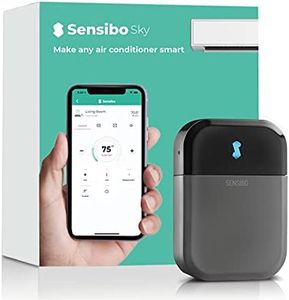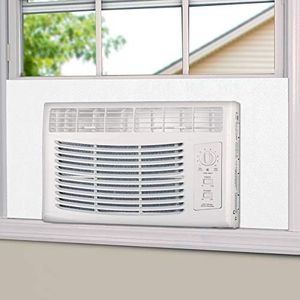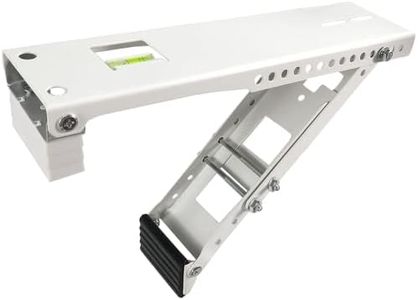We Use CookiesWe use cookies to enhance the security, performance,
functionality and for analytical and promotional activities. By continuing to browse this site you
are agreeing to our privacy policy
4 Best Window Units With Heat
From leading brands and best sellers available on the web.Buying Guide for the Best Window Units With Heat
When you're looking to buy a window unit with both cooling and heating capabilities, it's important to take a thoughtful approach so you get one that truly fits your space and your comfort needs. These units can help you maintain a pleasant indoor temperature year-round, but choosing the right one depends on several important factors. By understanding the key specifications, you can narrow your options and make sure your choice will efficiently heat and cool your space.BTU RatingBTU stands for British Thermal Unit, and it's a measure of how much heat or cooling power the unit can deliver. Higher BTU ratings mean the unit can handle larger spaces, but bigger isn't always better. A unit that’s too powerful for your room can cycle on and off frequently, leading to inefficient performance, while a unit with too few BTUs might not keep up. Generally, smaller rooms (like bedrooms) need fewer BTUs, while large living rooms require more. Reference room size guides to match BTU rating with your square footage, keeping in mind that high ceilings, sun exposure, and home insulation also impact what you need.
Heating TypeFor window units with heat, you’ll encounter two main heating methods: electric resistance heating and heat pump technology. Electric resistance heating is common, reliable, and provides instant warmth but usually consumes more electricity. Heat pump models are more energy-efficient since they move existing heat rather than generating it, but their performance drops in very cold weather. If you live in a mild climate, heat pump is an efficient option, while electric resistance may be better for supplemental heat or in places where winter temperatures drop very low.
Energy Efficiency Ratio (EER) / Combined Energy Efficiency Ratio (CEER)EER and CEER are measurements of how efficiently the unit uses energy while cooling. The higher the number, the more efficient the unit, which means less impact on your electricity bill. Units with better energy efficiency are also more eco-friendly. For most buyers, aiming for a higher EER or CEER is a good idea, especially if you anticipate using the unit often. Check for energy-saving certifications or labels that indicate the unit meets current efficiency standards.
Voltage and Plug TypeWindow units come in different voltage requirements—typically 115V or 230V—depending on their size and power needs. Smaller units often work with standard home outlets, while more powerful ones may require a special outlet. It's important to verify what outlets are available in your installation location before choosing. Matching the unit’s power requirements with your home’s capacity ensures safe and hassle-free installation.
Noise LevelNoise level is described in decibels (dB) and tells you how loud the unit will be when it’s running. This spec matters most if the window unit will be placed in a bedroom, nursery, or a space where quiet is important. Lower dB ratings usually mean quieter operation, so if you’re sensitive to sound, choose a quieter model. For general use in living areas, a moderate noise level may be acceptable.
Air Direction and Fan SpeedsControl over air direction and multiple fan speeds can help you distribute warm or cool air more evenly across the room. Units with adjustable vents or louvres allow you to point the airflow where you want, and diverse fan settings let you pick a balance between noise and airflow. If comfort and flexibility are priorities, look for units with customizable air direction and several fan speed options.
Size and WeightThe physical dimensions and weight of the window unit matter for both installation and space considerations. A unit that's too large or heavy for your window frame may be hard to mount and could be unsafe. Always measure your window before purchasing and check the unit's size and weight specs. Picking the right size ensures safe installation and minimizes cold or hot air leakage around the window.
Controls and FeaturesSome window units offer extra features like remote controls, digital thermostats, programmable timers, or smart home compatibility. These options make it easier to operate the unit and customize comfort levels, whether you’re home or away. If you appreciate convenience and want to fine-tune your climate settings, consider a unit equipped with more advanced controls and automation features.



